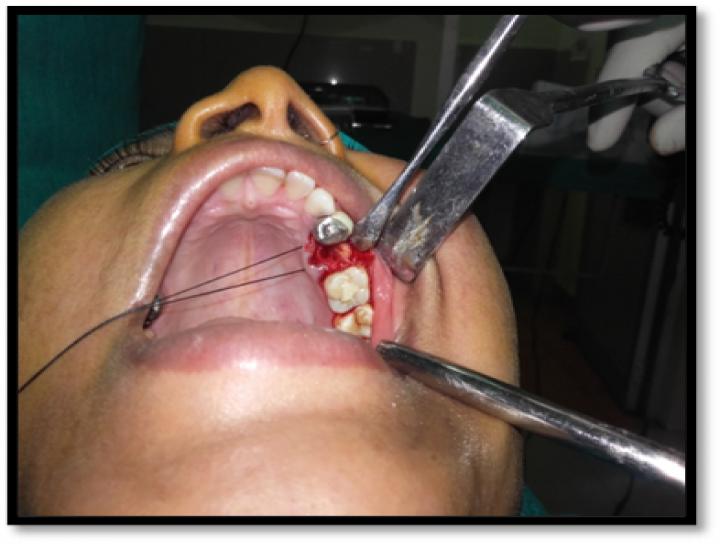
The rehabilitation of a tooth with hopeless prognosis in the esthetic zone without esthetic compromise with an implant remains elusive to date. A variety of graft materials and techniques have been introduced to counter ridge resorption. However, all of them fail to fully compensate for the physiologic consequences of the compromised blood supply post-extraction that leads to resorption of the bundle bone. Therefore, currently the two techniques, immediate implant placement and another, the socket-shield technique are being widely used to preserve the labial bone. The rationale behind the intentional retention of the buccal aspect of the root with its periodontal apparatus is that a portion of the blood supply that is derived from the PDL is retained. Moreover, the flapless approach that is utilized, since burs are used to remove the root structures, allows for maintenance of the blood supply from the supra-periosteal vasculature running through the periosteum attached on the buccal plate of the ridge. This technique therefore facilitates the preservation of the dimensions and esthetics of the ridge based on biological principles rather than on any biomaterial. The portion of the tooth root thus preserved on the buccal aspect of the socket is known as the socket-shield and the whole technique came to be known as the socket-shield technique.
SOCKET SHIELD TECHNIQUE
In 2010, Hürzeler et al. introduced a new method, the socket shield technique, in which a partial root fragment was retained around an immediately placed implant with the aim of avoiding tissue alterations after tooth extraction.
PRINCIPLE OF SOCKET SHIELD TECHNIQUE
• Preparation of root in such a way that buccal/facial section remains in-situ with buccal plate intact
• Tooth root sections periodontal attachment apparatus remains vital and undamaged to prevent the expected post extraction socket remodeling and to support buccal/facial tissues.
INDICATIONS OF SOCKET SHIELD TECHNIQUE
• The ideal extraction site for immediate implant placement little or no periodontal bone loss on the tooth that is to be extracted, such as tooth being extracted due to-
1) Endodontic involvement
2) Root fracture, root resorption
3) Periapical pathology
4) Root perforation
5) Unfavorable crown to root ratio
6) Residual deciduous tooth • A minimum of 4-5mm bone width at the alveolar crest and at least 10mm bone length from the alveolar crest to a safe distance above closest anatomical structures are recommended.
CONTRAINDICATIONS OF SOCKET SHIELD TECHNIQUE
1. Clinical conditions preventing primary closure
2. Close proximity to anatomical vital structures
3. Lack of bone beyond the apex
4. Presence of pus
ADVANTAGES OF SOCKET SHIELD TECHNIQUE
1. No additional material cost, No co-morbidity, Single surgery, Applicable in sites with endodontic apical pathology.
2. Especially in canine and premolars where the buccal cortical plate is thin and is more prone to fracture which makes it an unfavorable environment for implant placement which also requires a secondary grafting procedure. So as to overcome this difficulty this technique is used.
3. Alveolar ridge atrophy after tooth extraction has a negative impact on implant restoration. The buccal portion of the bone which is more prone to atrophy was preserved by retaining a part of buccal root segment which shields PDL on bucco facial aspect of the implant.
DISADVANTAGES OF SOCKET SHIELD TECHNIQUE
• Not yet reliable or predictable
• No long-term data yet
• Technique sensitive
CONCLUSION
Tooth loss and subsequent ridge collapse continue to burden restorative implant treatment. Especially in canine and premolars where the buccal cortical plate is thin and is more prone to fracture which makes it an unfavorable environment for implant placement which also requires a secondary grafting procedure. In-lieu of surgical augmentation to correct a ridge defect, the socket shield technique offers a promising solution.


No Any Replies to “SOCKET SHIELD TECHNIQUE FOR IMPLANT PLACEMENT”
Leave a Reply